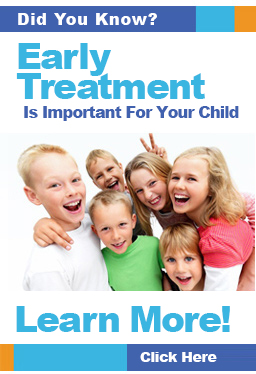Five Signs Your Child May Need Early Orthodontic Treatment
We see children as early as 3 – 4 years of age. We look for causes of crooked teeth, suggest an appropriate treatment to correct problems earlier, often without the need for braces in the future.
Look at your child and ask yourself the following questions:
- Is my child’s mouth open most of the time?
- Is my child a mouth breather or a nose breather?
- Is my child using muscles in the chin to bring the lips together?
- Is there any lip movement when my child swallows?
- Are my child’s upper front teeth resting on or in front of the lower lip?
If you answered YES to any of these 5 questions, there is a good indication that your child’s teeth, jaws and face are not growing correctly. Dr. Yuliya will see your child for an evaluation to determine if an early orthodontic treatment would be beneficial for your child to improve dental and facial development.
1. Is My Child’s Mouth Open Most of the Time?
For the jaws and teeth to grow correctly, the tongue should be positioned on the roof of the mouth. The tongue is the driving force behind the correct development of the upper jaw and the entire face. Only when the lips are together, the tongue will be in its proper position on the roof of the mouth, and the upper jaw will grow to its optimal size and shape with adequate room for all adult teeth. If the mouth is even slightly open and lips are apart at rest, the tongue is unlikely to rest or function on the roof of the mouth. The result is long, narrow faces, flat cheeks, receded chins, gummy smiles, and small, narrow jaws with lack of space for all adult teeth.
All children who have their lips apart at rest most of the time will have improperly developing jaws and crooked teeth.

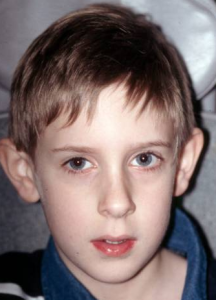
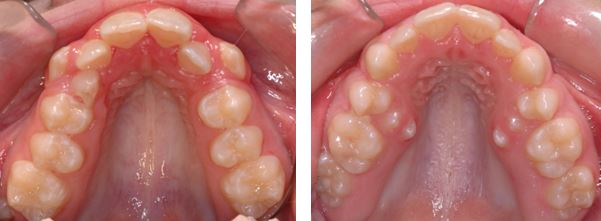
2. Is My Child a Mouth Breather or a Nose Breather?
We were all born to breathe through the nose. Nasal breathing provides filtered, warm, and moistened air straight to our lungs. Mouth breathing has a lot of adverse effects on facial growth, overall health, academic performance, and behavior of a child.
Additionally, nasal breathing with the lips closed posture provides for the tongue to rest on the roof of the mouth.
In a mouth breathing child, the upper jaw will not have the support from the tongue because the tongue will not be properly positioned on the roof of the mouth. Upper jaw will grow small and narrow.
Often a mouth breathing child will have an anterior open bite.
Anterior open bite is when the back teeth are together but there is a gap between top and bottom front teeth. This is because the tongue pushes out or thrusts forward between the top front teeth on every swallow.

3. Is My Child Using Muscles in the Chin to Bring the Lips Together?
- Ask your child to bring the lips together.
- Place your finger gently on the chin.
- If you feel the chin hard under your finger, the chin muscles are being used.
- If your child strains the chin muscles to bring the lips together, the lips will usually be apart all the time.

Muscles in the chin are being used to bring the lips together.
4. Is There Any Lip Movement When My Child Swallows?

There should be no movement of the lips when your child swallows
- Light force is needed to move teeth (1.7 grams).
- The lower lip can apply a force up to 300 grams and the tongue up to 500 grams.
- Movement of the lips while swallowing can move teeth out of alignment.
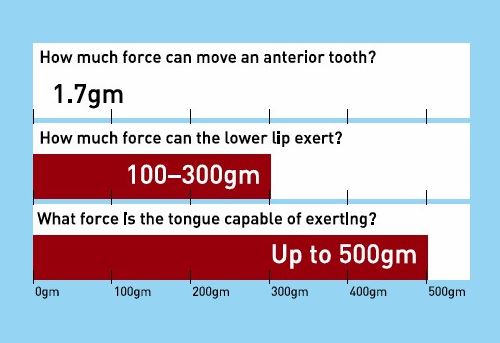
5. Are My Child’s Upper Front Teeth Resting on or in front of the Lower Lip?
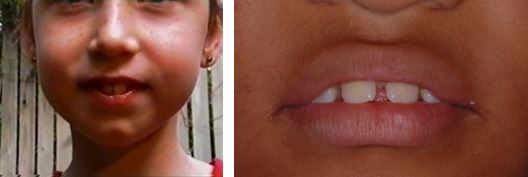
If the lower lip rests behind the upper front teeth, then it will be sucked into the mouth every time a child swallows.
This dysfunctional swallow is associated with “buck teeth”.
![]()

